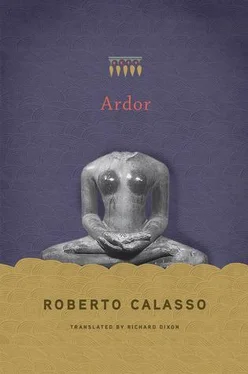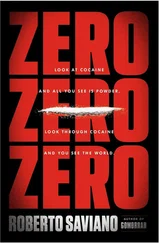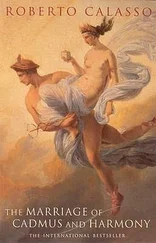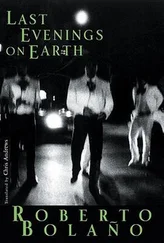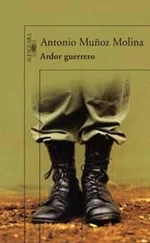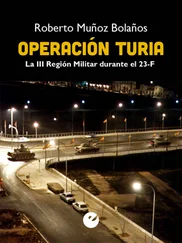* * *
In Sanskrit, in Greek, and in Latin, killing was defined as a “consent” by the animal to be immolated. In India, killing took place outside the sacrificial area and was not to be seen by anyone except the śamitṛ , the slaughterer who performed the act. And even where a vegetable substance such as soma was sacrificed, the pestle had to strike it in the presence of someone who was blindfolded.
In factory farms, right now, millions of animals spend a life of agony crammed together in spaces that prevent them from any movement, before being killed as hastily as possible. According to food industry ideology, this takes place with the “consent” of the animals themselves, who are supposed to feel more secure in such conditions.
* * *
When certain crucial stages were reached, various actions served to sidestep or surmount a contradiction that would otherwise have been crippling. When the animal chosen as a victim is taken for immolation, could the sacrificer touch it or not? He must not touch it — it is said — because it is being taken to its death. He must touch it — it is said — because “that [victim] that they are taking to the sacrifice is not being taken to its death.” Which argument is right? Both are. But which should be followed? If the sacrificer touches the victim, he makes contact with death. If he does not touch it, he is cut off from the sacrifice. So what should he do? Watching the sacrifice, we would have seen the pratiprasthātṛ guiding the victim, touching it from behind with two skewers, the adhvaryu holding the hem of the pratiprasthātṛ ’s robe, and then the sacrificer holding the hem of the adhvaryu ’s robe. Moving forward in a line, in silence, like Bruegel’s blind men. But slightly bent in concentration. This was the answer. In this way the sacrificer touched and at the same time didn’t touch the victim. And in this way they thought to escape logic by means of ritual gesture.
* * *
At the moment of immolation, those present are to avert their eyes. The animal is killed beyond the sacrificial boundary, next to the śāmitṛ there is fire where they will cook the victim’s limbs, outside the trapezoidal area marked out for the sacrifice, to the northeast. As in Greek tragedy — and with a perfect correspondence of meaning — the killing takes place offstage. The rite and the tragedy are complex ceremonial activities that make it possible to work through that intractable event, which must not be witnessed.
And here is the main point at which the use of euphemism inherent in every sacrifice emerges. Before striking the victim, they cannot say: “Kill it!” because “that is the human way.” They have to say: “Make it consent!” Some regard this instruction as hypocritical; others as sublime. It is both. And, above all, it is what happens in any case, as soon as the mute act is clothed in words. But it would be naïve to think that the Vedic ritualists were eager to cover up or mitigate something. That certainly was not their style. When necessary, they knew how to spell things out very clearly: “When they make the victim consent, they kill it.”
The formula in the Brāhmaṇas corresponds precisely with the Roman ritual that required the meek consent of the victim in order for the ceremony to be faultless. And before that, the Delphic oracle had recognized that “if an animal consents by bowing its head toward the lustral water … it is right to sacrifice it.”
The worry continues even after the killing — or after the consent, if we want to use the language of the gods. At that moment the victim has become food for the gods. But “the food of the gods is living, immortal for the immortals,” whereas the victim is a lifeless animal, strangled or with its throat slit. The contradiction is intensified especially around the killing of the sacrificial victim, like specks emerging in various places on a canvas, marring its perfection. What should be done, then? At this point, the sacrificer’s wife was to be seen coming forward. She would turn to the sacrifice, praise it. Then she would approach the victim and begin to clean its orifices with water. The vital spirits passed out — had passed out — from there. But “the vital spirits are water.” And so that motionless body, freshly bathed, now returned to being “truly living, immortal for the immortals.” Another obstacle had been overcome.
* * *
The first tangible form of evil is created by the anguish of the victim who is about to be killed. That anguish deposits itself in the heart. But the primary characteristic of evil is that, like energy, it cannot be eliminated, but only transformed, moved elsewhere. And so the evil passes from the heart of the victim to the spear that pierces it. But what will happen to the spear? The officiants would like it to be swallowed up in the current, near to the sacrificial ground. And so they cautiously approach the waters — seeking to assuage them, asking for their friendship. But as soon as the waters see them approaching with the spear, they draw back. Negotiation then begins. The officiants know they have to make a pact with the waters. They will agree not to throw the spear into them after the sacrifice to Agni and Soma — nor after that to Agni alone. And in exchange they will obtain an agreement that once the barren cow has been killed they can then, at the end of the ceremony, throw the spear into the waters. The ritualists felt satisfied with this, because with the barren cow “the sacrifice is completed.” And that which completes — they thought — has the power, due to its strategic position, to transfigure all that has gone before it. By freeing themselves from that extreme part of the evil, they could believe they were free of all evil. It would have been hard to achieve more than this.
The gods were the first to feel a sharp sense of guilt over the sacrifice. When the first victim was seized, they were filled with fear: “They did not feel inclined to that.” They knew what they were about to perform was the model of all guilt. They would pass this on to mankind. And so, whatever sacrificial speculation might one day be raised over guilt, to the point of wandering into abstraction or into the remotest realms of heaven or creation, at the end of the ceremony the perception of guilt would once again emerge, even more sharply, more insistently — and be concentrated on one object: the spear that pierces the heart. How can it be eliminated? Guilt does not decay, diminish, disappear. Like radioactive matter, it continues to emit radiation. Once again, it was a question of finding an answer to the unanswerable: “He shall bury the spear at the point where the dry and the damp meet.” A mysterious, indefinable point. A point — we can suppose — where the elements neutralize each other, where even anxiety would be suspended, inoperative, even if not entirely removed. This is what can be achieved: an impermanent balance. The anxiety remains. To get rid of the spear as soon as the barren cow has been slain: this pact remains valid even until today. The most effective measure has always been to forget it.
At the end of the sacrifice, rites are necessary in order to leave it. They correspond point by point with the rites celebrated to enter the sacrifice. The form A-B-B-A, known to anyone who studies music, originates here. The same also goes for any structure where the end must correspond with the beginning. And since, at the beginning, there was nothing on the sacrificial ground, all traces must be destroyed, removed, wiped away. The grass used as a cushion for the invisible gods is burned, various utensils are destroyed, the sacrificial post is burned. Only one object remains intact — the spear that has pierced the victim’s heart — but it is concealed, for “the instrument of the crime or of the suffering must be hidden.”
Читать дальше
